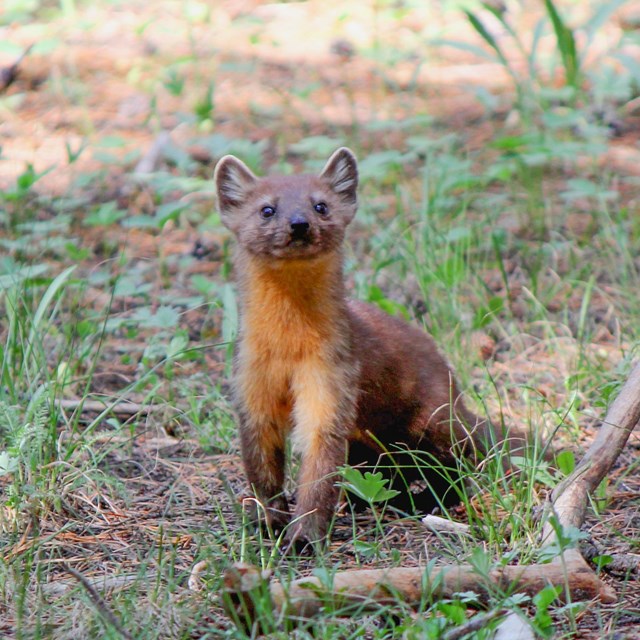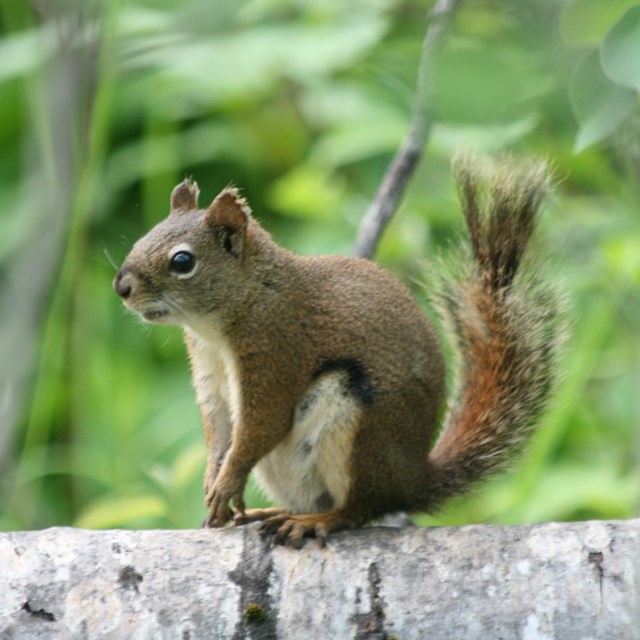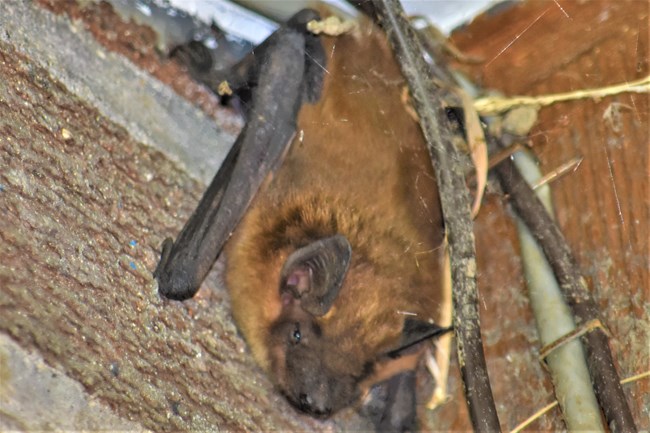
NPS / J. BORDEN Defining how some species came to live on Isle Royale can be tricky. But unlike other mammal species, it is easy to understand how bats arrived - they used their wings! Even though they’re mostly unseen, six species of bats call the island home. All six species spend parts of their summers on the island before they migrate to the mainland for winter hibernation. Big Brown BatBig brown bats (Eptesicus fuscus) roost in colonies and make their home in buildings, hollow trees, caves, or rock crevices. They hibernate in abandoned mines or in the walls and attics of heated buildings. Big brown bats fly low to the ground in search for food, which consists primarily of beetles and flies. 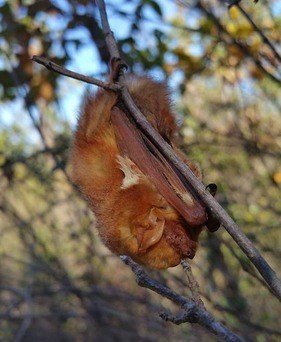
NPS Silver-haired BatSilver-haired bats (Lasionycteris noctivagans) typically roost under tree bark during the day, and may also use open buildings. They emerge early in the evening and fly among the trees to find their meals of insects. Silver-haired bats migrate south in November and return north in April. This species was observed in a 2002 bat survey and reverified during a 2016 acoustic bat monitoring study. Red BatRed bats (Lasiurus borealis) migrate south in October and return to the Great Lakes region in late April. On Isle Royale, red bats roost primarily in hardwoods like maples, but will sometimes roost in conifers. Hawks, owls, and blue jays all prey on red bats. The original evidence of red bats on Isle Royale was from remains found in a merlin’s nest in 1966. This species of bat was observed in a 2002 bat survey and reverified during a 2016 acoustic bat monitoring study. 
NPS / PAUL BROWN Hoary BatHoary bats (Lasiurus cinereus) roost primarily in maple and spruce trees, and they migrate south in early November and return to the Great Lakes in April. Hoary bats are a very large species that comes out late in the evening. They are strong flyers that are typically found near or above the tree canopy. This species was observed in a 2002 bat survey and reverified during a 2016 acoustic bat monitoring study. Little Brown BatLittle brown bats roost in colonies inside hollow trees, beneath loose bark, in caves and in dark crevices of buildings. They eat a variety of insects but prefer aquatic insects such as mayflies and black flies, which they catch by flying low over water. Little brown bats become active at dusk and do most of their feeding two to three hours after sunset. Pups are born in late June or early July and can live up to 30 years. 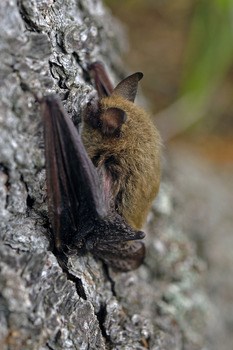
NPS / PAUL BROWN Northern Long-eared BatNorthern long-eared bats (Myotis septentrionalis) are like little brown bats in appearance and behavior, but they are less common. Both species roost in colonies, but northern long-eared bats are not as likely to roost in human made structures. This species tends to use tree cavities, especially in maples and the undersides of bark. As a result, they are more common in woodlands than over water, and they forage between the forest canopy and the shrub layer for moths, beetles and other insects. As of 2022, U.S. Fish and Wildlife has listed the Northern long-eared bat as endangered under the Endangered Species Act due to white-nose syndrome. Begging to See Bats?
|
Last updated: January 4, 2024


